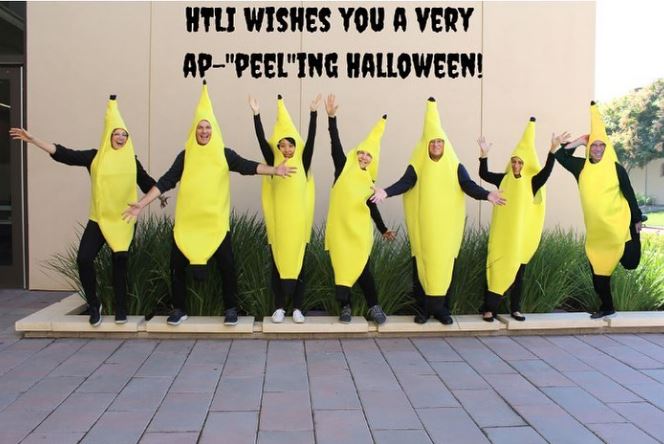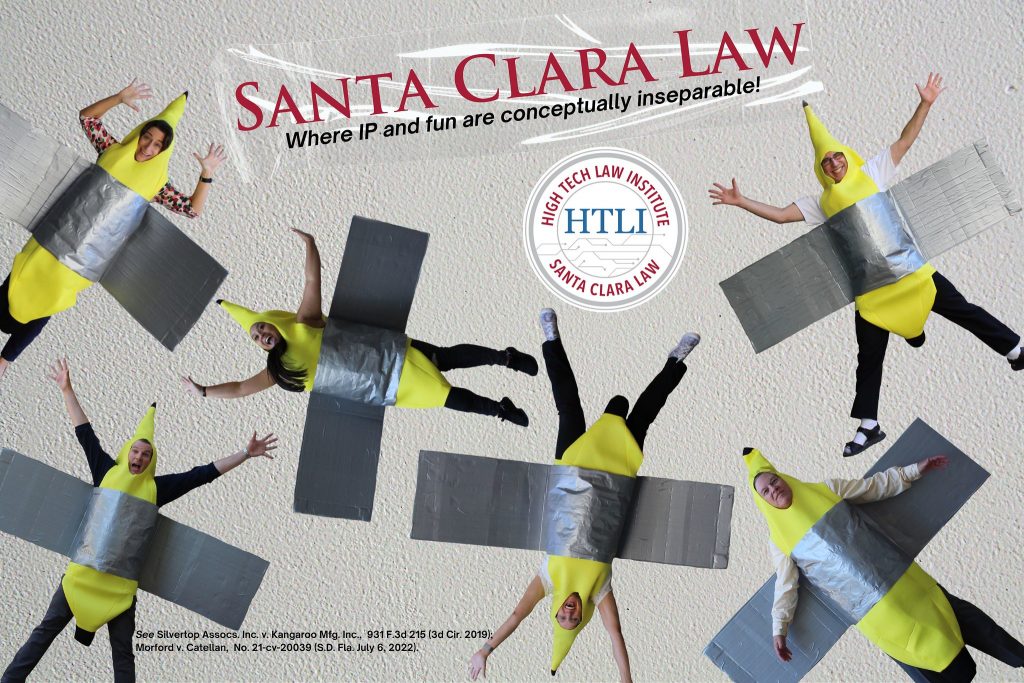Revisiting Bananas, Duct Tape, Walls, & Copyright–Morford v. Cattelan
Among all of the fruits, bananas play an especially important role in copyright jurisprudence. For example, we must resolve when duct-taping a banana to a wall infringes copyright. The short answer should be “never.” That’s not exactly the answer a court gave, but perhaps close enough.
This case involves Morford’s 2001 artwork named “Banana and Orange.” Independently (?), Cattelan created artwork named “Comedian” in 2019. The court displayed the respective artworks:
Morford sued Cattelan for copyright infringement. Somewhat surprisingly, the district court denied Cattelan’s motion to dismiss. On summary judgment, the court rules for Cattelan.
Copying-in-Fact. If a plaintiff can’t show mechanical copying through direct evidence, it can establish copying inferentially by showing that the defendant had access to the copyrighted work and that it’s improbable the works’ similarities were due to the defendant’s independent creation.
Morford’s work had been displayed on social media, including YouTube, Facebook, and BlogSpot. The court says that such online displays, by themselves, don’t show that Cattelan had legally recognizable access:
A work’s mere presence on the internet alone, then, is insufficient to demonstrate access without some additional proof that the defendant had some relevant nexus to the plaintiff’s work or that the plaintiff’s work enjoyed some meaningful level of popularity….
[Banana and Orange] remained a relatively obscure work with very limited publication or popularity….the only record evidence relating to any connections between the [litigants] is Cattelan’s clear statement that he had never heard of Morford until this lawsuit
Later, the court says that Morford did not successful rebut Cattelan’s evidence of independent creation.
No Wrongful Copying
To determine wrongful copying, the court uses the abstraction-filtration-comparison test. This test isn’t often used outside the software context, and it generally results in defense wins.
With respect to filtration, the court says the merger doctrine limits what’s protected by copyright. In particular, the angles of duct tape in relation to the banana are merged because there are only so many options:
Placing the tape parallel with the banana would cover it. Placing more than one piece of tape over the banana, at any angle, would necessarily obscure it. An artist seeking to tape a banana (or really, any oblong fruit or other household object) to a wall is therefore left with “only a few ways of visually presenting the idea”—all of which involve a piece of tape crossing the banana at some non-parallel angle.
This knocks out the duct-tape placement as a piece of Morford’s copyright, but the court says there are still other protectable elements of Morford’s work. The court summarizes and compares those elements in a chart:
[FN10 confused me. It says “the exact height at which the banana in Comedian is placed above the floor was filed under seal.” Why? It can’t be a trade secret, because the work was displayed in public.]
The court then says the amount of overlap on the protectable elements isn’t enough to find infringement:
Banana and Orange and Comedian share only one common feature that the Court has not already set aside as unprotectible: both bananas are situated with the banana’s stalk on the left-hand side of sculpture. This solitary common feature is, on its own, insignificant and insufficient to support a finding of legal copying. And the placement of the banana’s stalk (on the right-hand side of the sculpture versus the left, or vice-versa) would be another element subject to the merger doctrine anyway: there are only two ways the stalk may be placed, to the right or to the left.
(But per geometry, a 3D space offers the option to rotate the banana on the Z-axis).
The court thus concludes: “Comedian and Banana and Orange are different expressions of the underlying idea….To find otherwise would further limit the already finite number of ways in which a banana may be legally taped to a wall without infringing on Morford’s work.”
While the court didn’t knock out Morford’s copyright entirely, the court’s methodology makes it clear that many variations of bananas duct-taped to walls will not infringe because of the lack of copyright protection for specific elements, the merger doctrine, or the lack of similarity. As a result, this case suggests Morford has the thinnest of copyrights, and any other banana/duct-tape sculptures are not likely to infringe unless they are essentially identical to Banana and Orange.
A Personal View
The High Tech Law Institute has a special affinity for bananas copyright law. We first made some marketing material where high tech faculty and staff wore banana costumes to celebrate the copyright battles over the costumes. For example:
Then, in response to the MTD denial in this case, we made more marketing material of faculty and staff in banana costumes, this time faux-duct taped to walls:
See the behind-the-scenes “making of” videos (1, 2) and photos (1, 2)
When we made the poster, we knew the legal status of bananas duct-taped to walls hadn’t been resolved, but we felt good about our position nonetheless. Now we’re more even more sure that we didn’t violate copyright law with this marketing. VINDICATED!!!
Case citation: Morford v. Cattelan, 2023 U.S. Dist. LEXIS 102287 (S.D. Fla. June 12, 2023)




